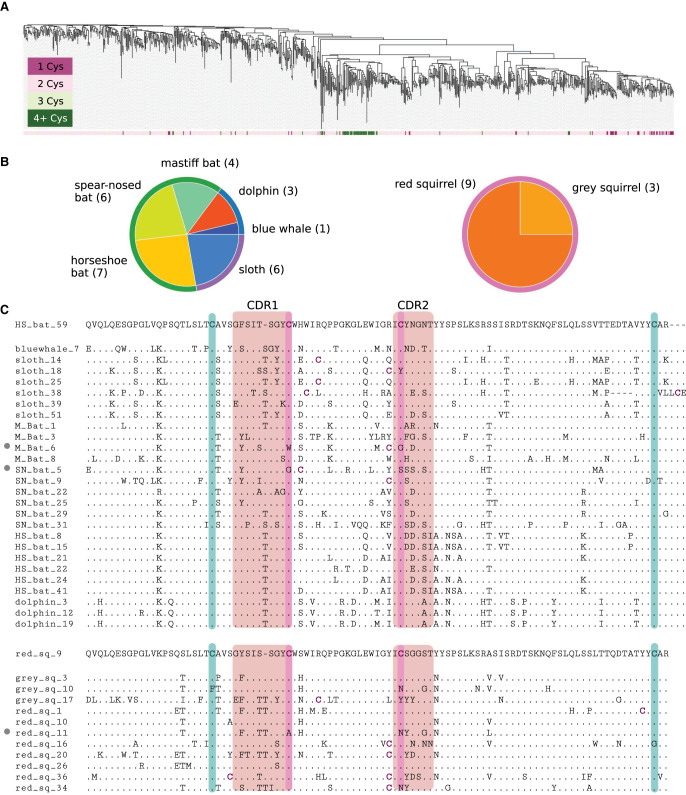Figure 4.
Two novel cysteine-rich clusters of mammalian IGHV genes. (A) A phylogenetic tree of IGHV genes colored according to the number of cysteines in their amino acid sequences. (B) Only two out of 25 large multispecies clusters of V genes contain cysteine-rich V genes. The description of pie plots is provided in the caption to Figure 3B. The number within parentheses next to the species name indicates the number of V genes from this species. (C) Multiple alignment of genes from two clusters shown in B. Three non-cysteine-rich V genes are marked with a grey circle on the left. The gene on top of each cluster is chosen as the sequence of a V gene with the minimum average distance from other genes in the cluster. Green (purple) bars show positions of canonical (noncanonical) cysteines. Some proteins contain cysteines (that are shown in purple) outside these positions. “HS_bat,” “M_bat,” and “SN_bat” in the top alignment refer to V genes of the horseshoe bat, the mastiff bat, and spear-nosed bat, respectively. “Red_sq” and “grey_sq” in the bottom alignment refer to V genes of the red squirrel and the grey squirrel, respectively.

